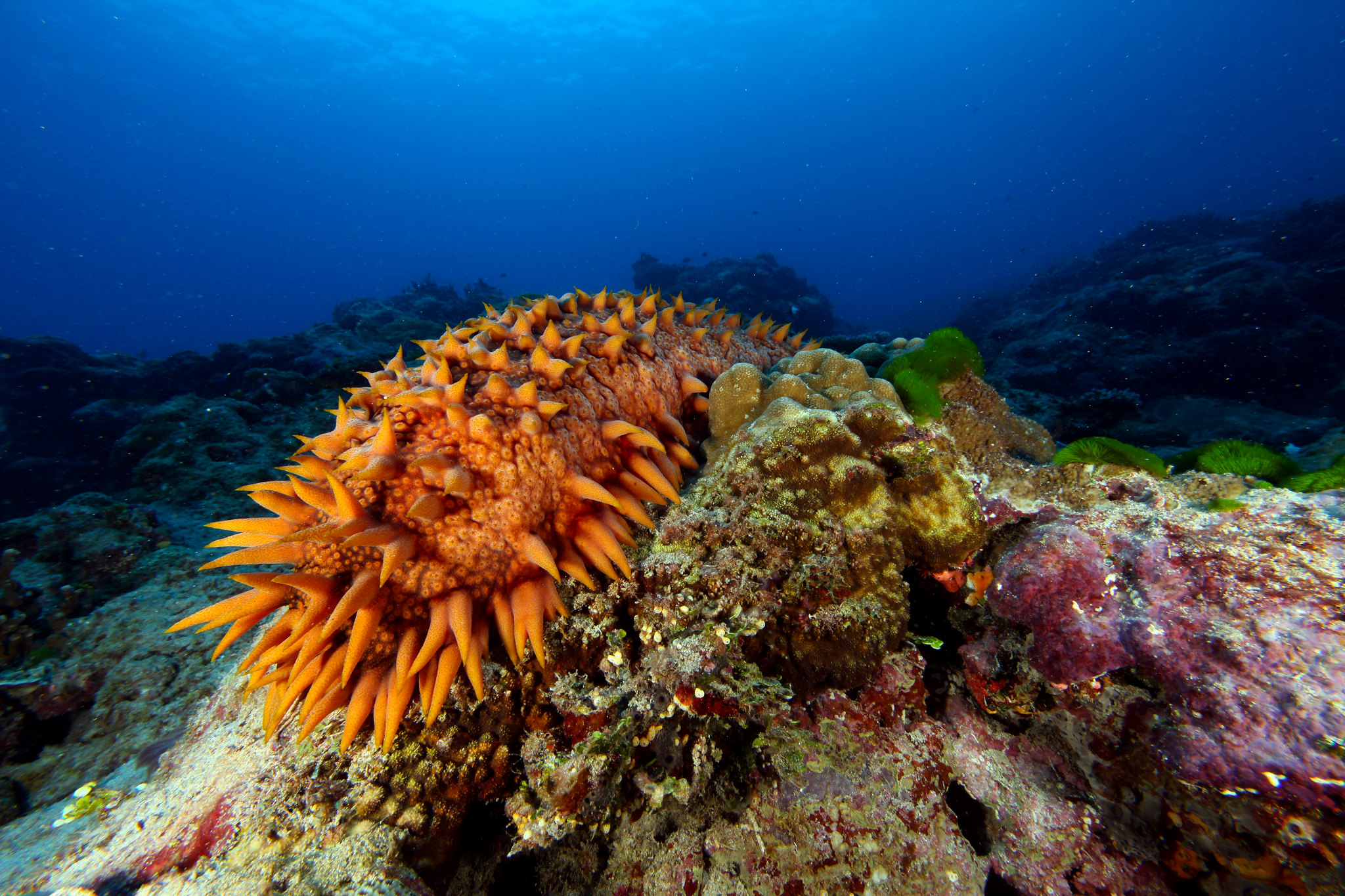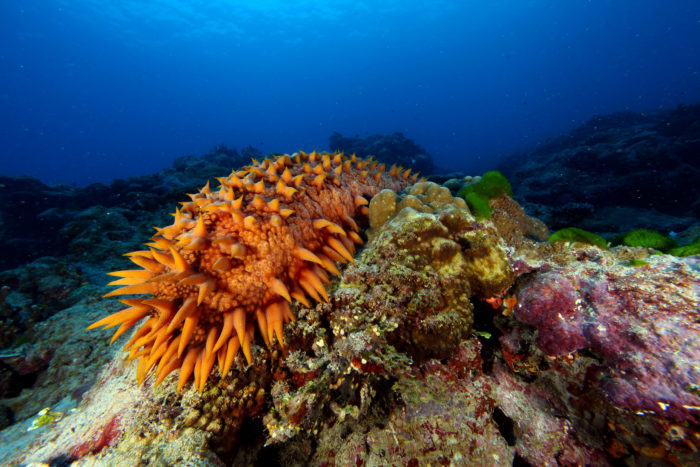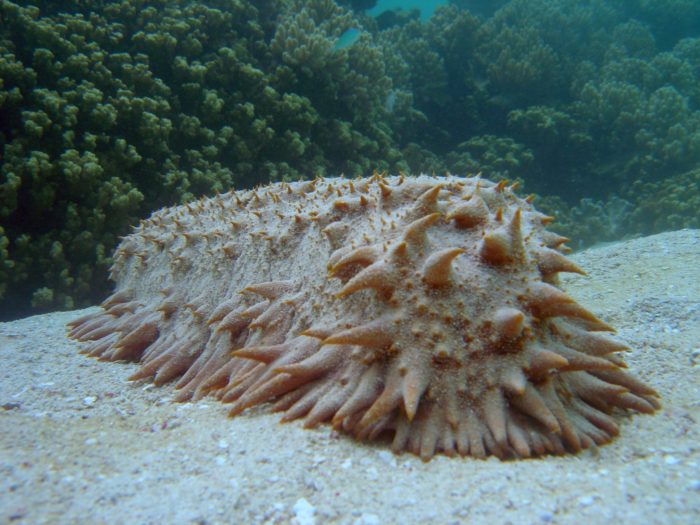
Sea Wonder: Sea Cucumber

Sea cucumbers like this one in National Marine Sanctuary of American Samoa are covered with soft, leathery skin. Photo credit: Greg McFall/NOAA
Don’t go looking for these cucumbers on the salad bar! The name sea cucumber (Holithuridea sp.) may suggest a cool, water-based vegetable found in the ocean, but these echinoderms (related to sea stars and sea urchins) are actually animals (and quite slimy ones at that).
Description
There are more than 1,000 known species of sea cucumbers that inhabit the world’s ocean. One of them – the edible sea cucumber – is a fisheries target and eaten by people in many parts of the world. Given the diversity of sea cucumbers as well as their diets and habitats, they can look wildly different from one another. The smallest species reaches about four inches long when fully grown while the largest can grow to be longer than 10 feet! Their bodies can be tube-like or round, and they do not have arms or other features shared by their echinoderm relatives. On the bottom of each sea cucumber are rows of tube feet to help them move, and their mouths usually have a set of tentacles nearby to help them catch and eat food. Sea cucumbers do not have a true brain and no true sensory organs. Instead, a complex network of neurons helps sea cucumbers experience touch and the presence of light. They can range in color but are usually well-suited to blend into their native habitats.
Diet & Habitat
Sea cucumbers are scavengers that slowly roam the seafloor and feed on algae, tiny animals, or decomposing matter. They collect morsels with the tentacle-like tube feet around their mouths. Given their feeding strategy, they also ingest sand and mud, which they sift through and expel, leaving a trail of filtered sediment in their wake. They feed during both day and night, and their feeding process helps to support biological processes like decomposition. Crabs, fish, turtles, and even some species of shark are natural predators of sea cucumbers. To protect themselves, some species can shoot sticky threads from their bodies to entangle and confuse predators and give them time to escape. They can also mutilate their own bodies and reveal their toxic internal organs, later regrowing missing body parts after the danger subsides.
Sea cucumbers live on the sea floor near coral reefs, seagrass beds, and other fixed habitats. They embed themselves into the sand or sediment and spend their lives here. They are found in tropical, subtropical, and temperate salt waters throughout the global ocean. Given the wide range of these species, we can find sea cucumbers across most of the National Marine Sanctuary System, with the exception of the Great Lakes and freshwater sites.
Life History
Sea cucumbers, like their echinoderm cousins, can reproduce both sexually through broadcast spawning and asexually through budding. Asexual reproduction creates a genetically identical clone that does not cycle through most of the species’ life stages, while broadcast spawning involves the fusion of egg and sperm cells in the water column, which creates eggs that incubate, hatch into larvae, and grow up to be adult sea cucumbers. There are advantages and disadvantages to each reproductive strategy. For example, few sea cucumber larvae make it to adulthood, while clones do not promote the genetic diversity needed to keep a species resilient against present and future changes in the environment. On average, a sea cucumber can live between five and 10 years.
Threats & Conservation
In addition to their vulnerability as larvae, sea cucumbers are fished and farmed commercially, and are thus at risk of being overfished. Additionally, they are vulnerable to climate change and ocean acidification, habitat destruction, illegal fishing, and water pollution.

Photo credit: David Burdick
